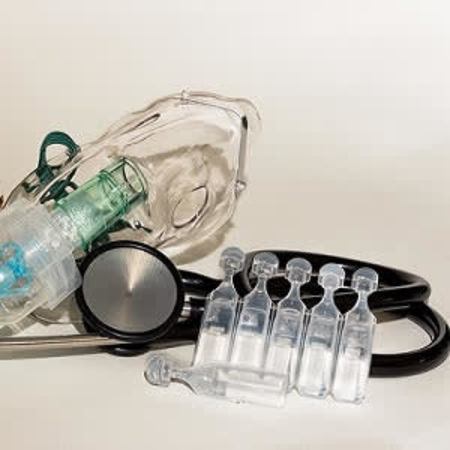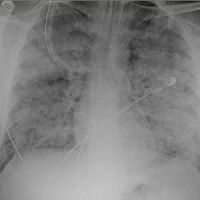The acute respiratory distress syndrome (ARDS) was first reported in 1967. Upon the occasion of its 50th birthday, ARDS is due for a midlife crisis, says Dr. Robert P. Dickson, of the Division of Pulmonary and Critical Care Medicine, University of Michigan Health System. "In our era of molecular medicine, ARDS seems a bit stuck in the past," he writes in an Editorial to appear in the American Journal of Respiratory and Critical Care Medicine. "Despite strides in supportive care (e.g., lung protective ventilation, neuromuscular blockade), we’ve developed no targeted treatments that prevent, attenuate, or resolve ARDS. When it comes to molecular interventions, we’re stuck in 1967."
For decades, Dr. Dickson points out, we’ve been studying, teaching, and treating ARDS using this conceptual model: an injurious exposure (e.g., sepsis, pneumonia, or trauma) causes epithelial and endothelial injury within the host, provoking the pathophysiologic and clinical features of the disease. However, this model fails to explain numerous key experimental and clinical observations, all related to the microbiota on and in our bodies. For instance: germ-free and antibiotic-treated animals are consistently protected from ARDS, even in sterile (noninfectious) exposure models.
"More recently, we have discovered diverse communities of bacteria within the lungs, undetected by culture, altered in ARDS, and correlated with alveolar inflammation. These observations - old and new, clinical and experimental – can’t be explained using our conventional model," the doctor says.
It’s time to broaden the model to include a third key factor: the lung microbiome. Dr. Dickson cites the new study by Panzer and colleagues (also to be published in AJRCCM), which provides a trove of fresh observations to flesh out this newly broadened model. Using 16S rRNA gene sequencing, the authors characterised bacteria detected in endotracheal aspirates collected serially from a large cohort of mechanically ventilated trauma patients. By applying rigorous ecologic analyses to this well-characterised cohort, they identified previously undemonstrated relationships between the composition of respiratory microbiota and host factors (smoking status, congestive heart failure, alcohol use) as well as concentrations of concurrently sampled plasma biomarkers of inflammation and alveolar injury. They found that the composition of respiratory microbiota shifts profoundly during the first 48 hours of mechanical ventilation, and these 48-hour communities are correlated with subsequent development of ARDS.
The discovery of the lung microbiome - and its disruption in ARDS - has broadened the model of ARDS pathogenesis, creating a web of associations with undetermined causal relationships. This complexity, according to Dr. Dickson, can be reduced to three key hypotheses:
1) Some exposures (such as sepsis, hyperoxia, and aspiration) directly alter lung microbiota, mediating alveolar inflammation and injury.
2) Lung injury alters the respiratory ecosystem, selectively favouring the outgrowth of select lung bacteria.
3) Once lung dysbiosis and lung injury are established, they perpetuate each other, prolonging ARDS even after the provoking exposure is gone (e.g., influenza).
He says that longitudinal human studies, interventional studies with pre- and post-intervention sampling, and complementary animal models will be required to test and refine each hypothesis.
"Hopefully, 50 years from now, we’ll celebrate the centennial of ARDS with an arsenal of molecular therapies, borne of our newly broadened model," Dr. Dickson writes.
Source: American Journal of Respiratory and Critical Care Medicine
Image Credit: Pixabay
References:
Dickson, Robert P. (2017) The Lung Microbiome and ARDS: It’s Time to Broaden the Model. American Journal of Respiratory and Critical Care Medicine. doi.org/10.1164/rccm.201710-2096ED
Latest Articles
acute respiratory distress syndrome, ARDS, lung microbiome
The acute respiratory distress syndrome (ARDS) was first reported in 1967. Upon the occasion of its 50th birthday, ARDS is due for a midlife crisis, says Dr. Robert P. Dickson, of the Division of Pulmonary and Critical Care Medicine, University of Michiga



























